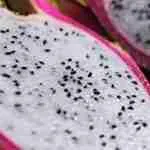Pink fruit comes in all shapes and sizes. From tropical, sweet-tasting delicacies, to tiny edible berries that might poison you in large quantities.
The best pink fruits are those that take you on a journey of discovery.
Let’s explore some of the wonders of nature. Most of the fruits on this list are edible. Some might have other interesting uses. You’ll surely find some interesting pink fruits (with pictures!) on this list. Which one will be your favorite?
1. Dragon Fruit

The Pitaya Roja or Red Dragon Fruit (Selenicereus costaricensis) is a unique tropical fruit that most will know in the pink-white variety. It is clearly the color difference from white to pink that makes this variety special.
The higher sweetness and the almost purple color of the flesh make this fruit perfect for consumption. You can eat dragon fruit as is, or process the juice in smoothies and juices.
Dragon fruit is very high in vitamin C, antioxidants, and will also boost your iron levels. This will give you heaps of energy and strong muscles!
2. Apple Guava
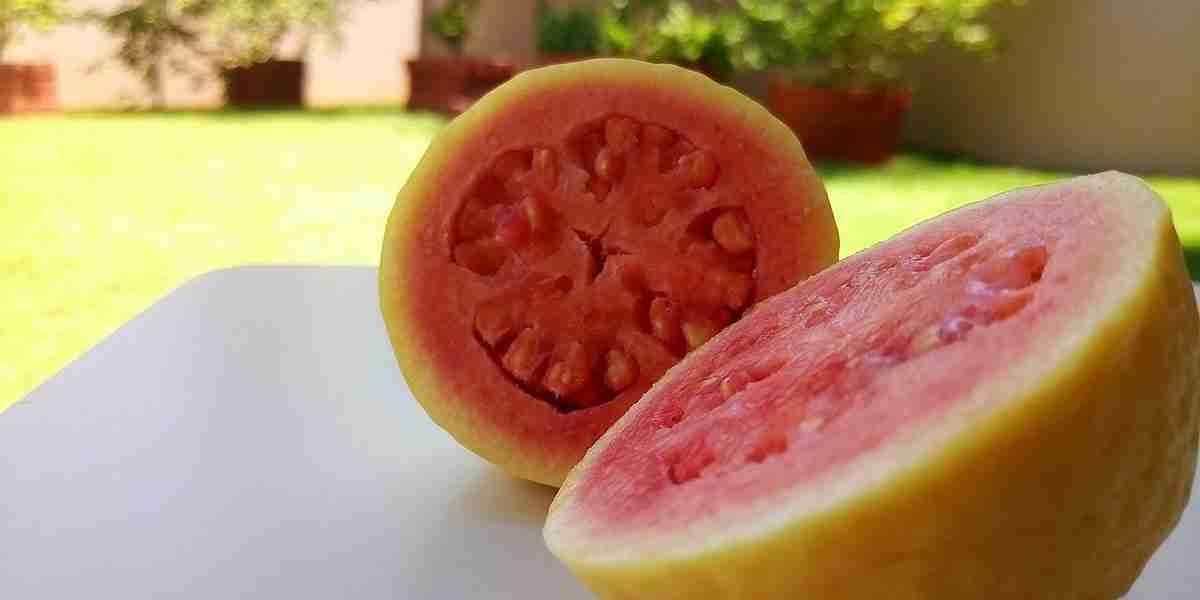
The common Apple Guava (Psidium guajava) is a round, apple-shaped fruit with green skin and pink flesh. Some guava varieties won’t have the pinkish color, but will be white on the inside instead.
While guava can be perfect as a healthy snack, some cultures will also use the fruit as a medicine. Guavas are commonly used to treat stomach problems, high blood pressure, and would be able to help with wound healing, among other things.
However, there is no conclusive scientific evidence to prove its effectiveness as a medicine. But as a snack, the antioxidants, vitamin C, potassium, and fiber in the fruit definitely won’t harm you.
3. Lychee
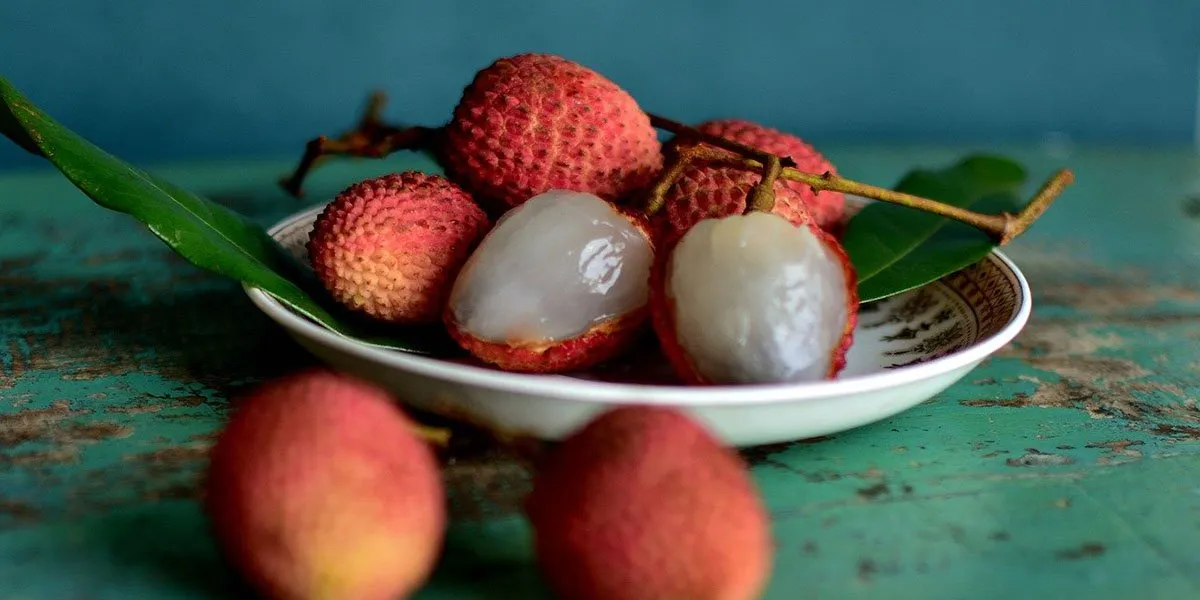
The common Lychee (Litchi chinensis) is the fruit of a tropical tree native to southern China. Lychees are part of the soapberry family (Sapindaceae) and are widely available on Asian markets.
The small round lychee fruit with rough skin has a strong sweet-citrusy flavor. The texture and taste are comparable to a grape, but more aromatic. Some might even claim it has a floral, rose-like flavor.
Lychees are mainly used as food or medicine. Several health benefits might be attributed to the tropical fruit, but there is no conclusive evidence to make any health claims. However, the fruit is rich in vitamin C, copper, and plenty of fiber.
4. Raspberry
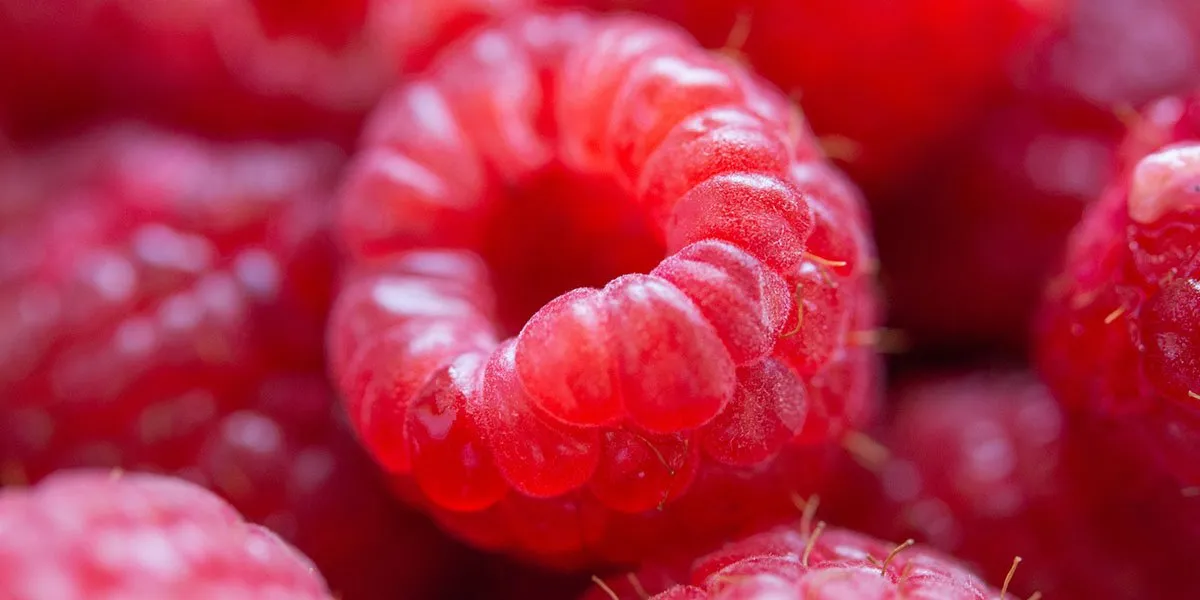
Raspberry (Rubus idaeus) is the deliciously sweet and relatively perishable fruit that we all know and love. The pink berries are widely available across the globe, both in frozen and fresh form.
Raspberries are perfect for consumption in desserts, salads, pastries, or as a jam. The fruit and leaves of the raspberry plant are also known for their medicinal properties, especially for the heart and blood vessels.
But just like with most fruits, there is no scientific evidence to support these health claims. What we can say with certainty is the fact that they’re rich in vitamin C and fiber. They also contain vitamin A, B6, zinc, calcium, and potassium. What a superfruit!
5. Pomegranate
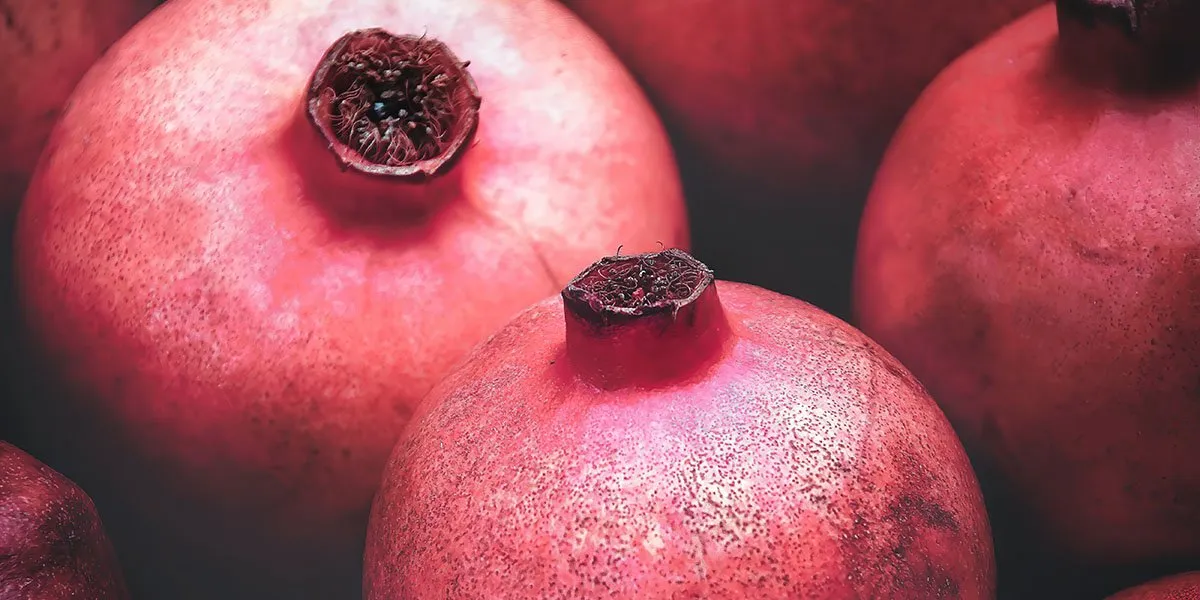
The Pomegranate (Punica granatum) is a seed-filled pink fruit that is widely available across the globe. Many health benefits have been attributed to pomegranates since ancient times. The seeds are edible and commonly used as an ingredient in juices, smoothies, or salads.
The high amount of vitamin C and antioxidants (as well as other minerals) in this fruit have safely secured its spot in the category superfruits.
While originally from the Himalayan region in Asia, these fruits are now mainly cultivated in the warmer regions of the United States, and are grown all the way down south into Latin America, and as far south as Chile.
6. Grape
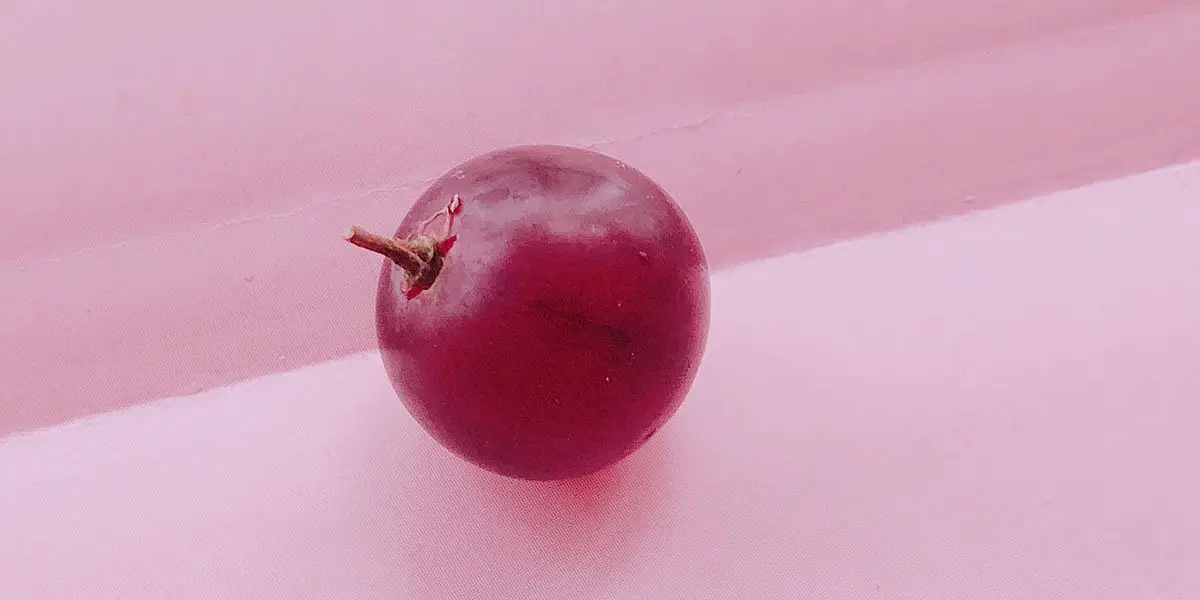
Grapes (Vitis vinifera) come in many varieties, including pink. While pink grapes might not be the norm, they are definitely out there in bunches. And no, you can’t directly make rosé wine out of it, but you could use them to make a light red wine.
As some people might know, grapes are attributed a myriad of health benefits, from boosting the immune system to a longer life. As with most fruits, these claims are to be taken with a grain of salt.
In moderation, grapes can be a healthy snack. They are packed with nutrients, but also with sugars. Grape juice and wine are common uses for this fruit, but you can also snack on them directly.
7. Peach
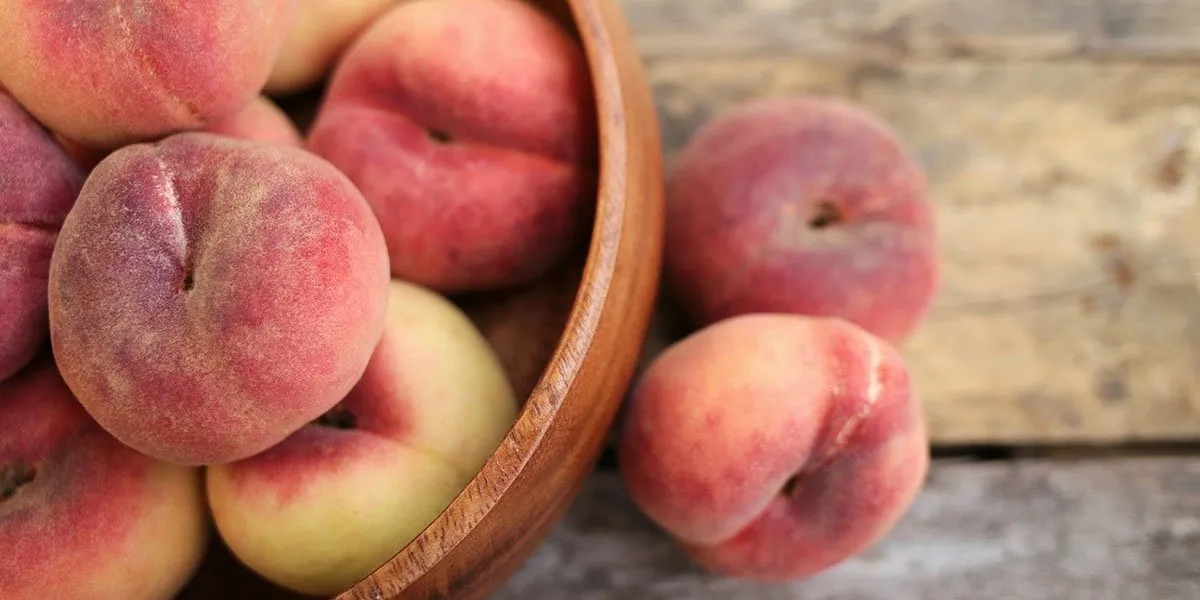
One might argue about the pinkness of a Peach (Prunus persica), but it really depends on the variety of the fruit you’re dealing with. Most varieties can be called light pink to a soft red, mixed with yellow. The flesh of a peach is usually yellow-pink in color.
Peaches are soft, sweet, and juicy with a large pit inside. While the pit contains the poisonous substance cyanide, accidentally swallowing one will not harm you. Only crushed pits can be harmful to humans.
Uses of the peach differ from juices and smoothies, to skincare products. The fruit is also attributed to several health benefits (anti-aging, good for the immune system), much like the other fruits on this list.
8. Pink Banana
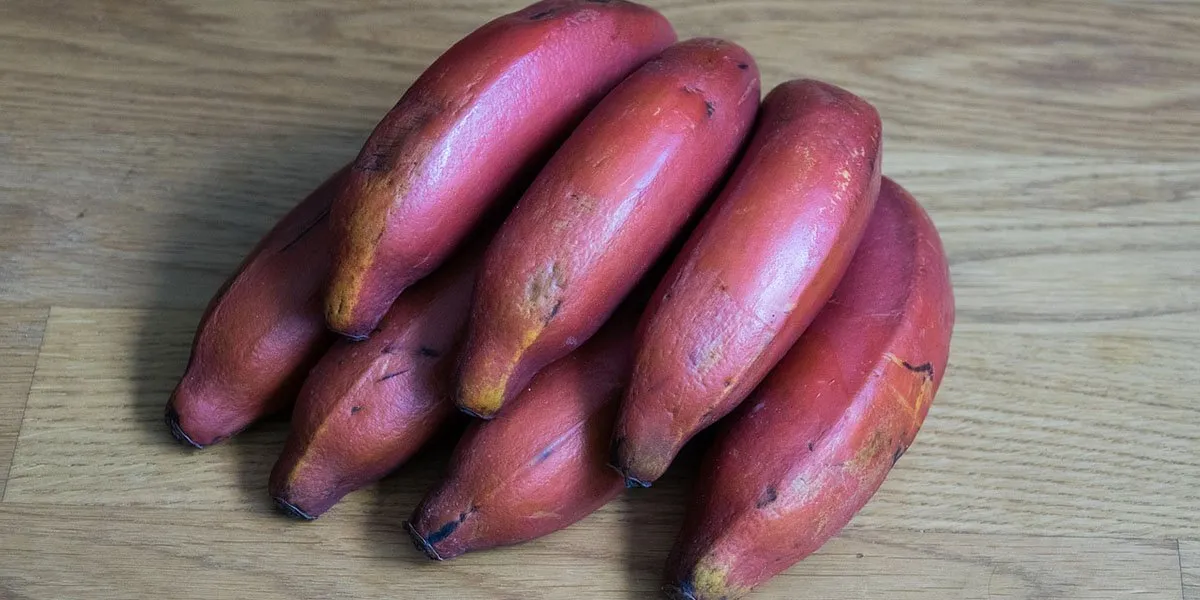
The Pink Banana (Musa Velutina) really exists, and it’s a completely separate subspecies from the bananas we all know and love. In fact, we love this wild banana species so much, we made a whole article about it.
Otherwise known as the red banana or hairy banana, this tiny banana species is very healthy! It contains large amounts of vitamin C, antioxidants, and potassium, all of which are helpful in a balanced diet.
The fruit is best used as a banana pulp, smoothie, or juice. The fruits themselves contain a large number of big seeds, which leaves very little of the yellow banana flesh to eat.
9. Java Rose Apple

Also known as the Java Apple, Wax Apple, Wax Djambu, or Djambu Semarang, the watery Java Rose Apple (Syzygium samarangense) is a fruit with many names. The tropical fruit is often confused with the Malay Apple and the Water Apple.
To make matters even worse, the Java Rose Apple is the most common host for different types of worms and larvae. But worry not, these pests mainly nest in the rotten fruits.
Native to South-East Asia, this tropical fruit is known for its medicinal benefits. It is claimed that this fruit would be good for cholesterol levels, reducing the risk of a stroke, and boosting the immune system and metabolism. They are also a source of refreshing hydration, much like watermelon.
10. Coralberry
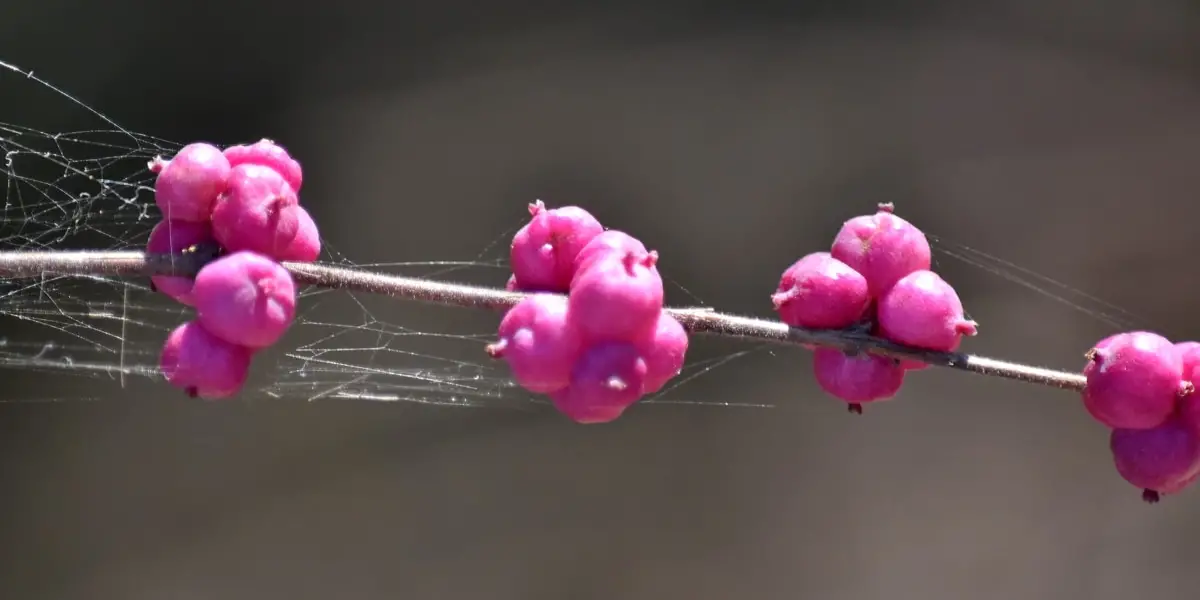
Coralberries (Symphoricarpos orbiculatus) are winter berries that are commonly found in the eastern part of North America. These bright-pink berries are technically edible, but it is not recommended. They contain a toxic substance called saponin.
The main use of the coralberry is ornamental. Their color and winter hardiness makes them a perfect part of winter- or Christmas center pieces.
The coralberry shouldn’t be eaten by humans or pets, but are often consumed by wild birds and other wild animals. Their stomachs are better suited to deal with the toxicity of this colorful berry.
11. Pink Blueberry
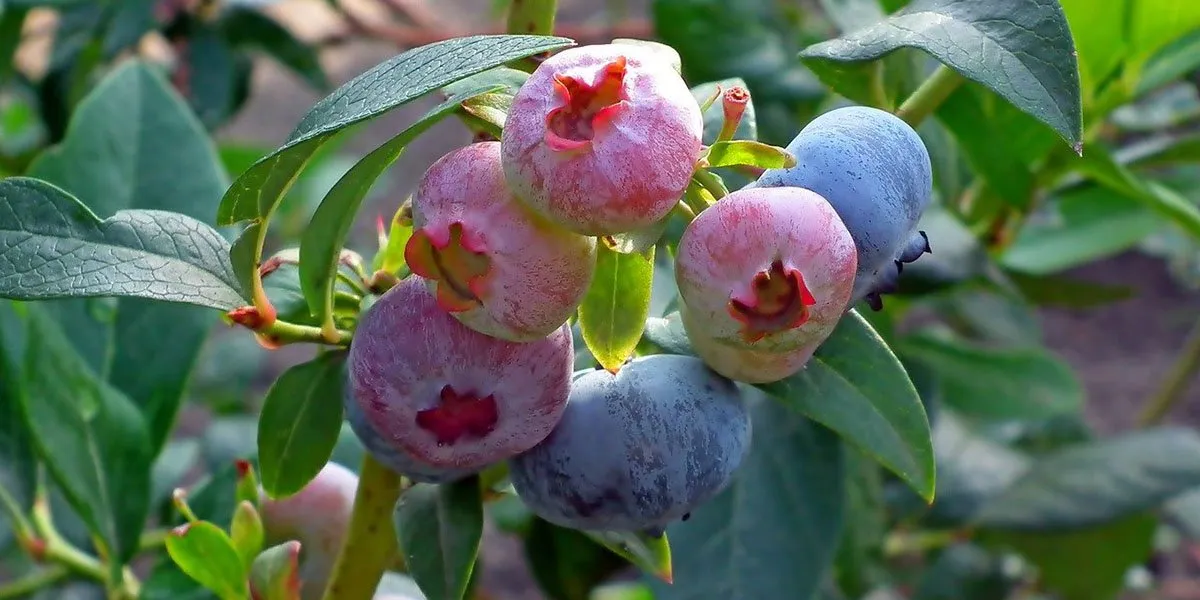
While most blueberries are pink at some stage in their development, the Pink Lemonade Blueberry (Vaccinium corymbosum), sometimes called ‘Pink Berry’, is an edible berry variety that is meant to stay pink in its ripe stage.
While you won’t encounter these colorful berries in the supermarket, the plant variety is widely available in most local garden centers, especially in the United States and Europe.
The main use of blueberries is consumption, but the pink ones also have an ornamental use in gardens and backyards. Blueberries are also praised for their medicinal properties, as they contain a large number of healthy vitamins and minerals.
12. Lilly Pilly Berry
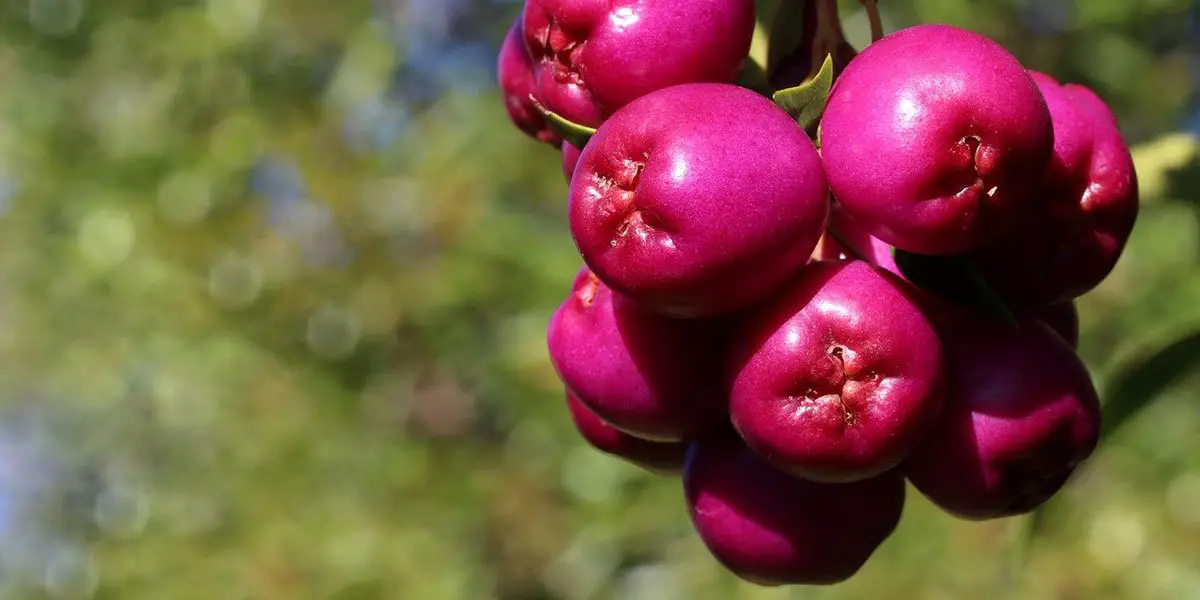
The Lilly Pilly Berry (Syzygium smithii) is perhaps one of the first berries you might think of when mentioning the color pink. These tasty berries are a delicacy and taste best plucked directly from the tree.
Lilly Pilly berries are commonly used to make jams, cordials, and sauces. The fruit itself has a sweet but tart flavor. Lilly Pilly berries are often compared with cranberry because of their similar taste.
These berries are widespread in Australia, but the trees of this tiny fruit are also native to parts of Southeast Asia. While the seeds are available online, there are no American hardiness zones where this fruit could flourish. You’d have to travel down under to try them!
13. Fig

The common Fig (Ficus carica) comes in all sorts of colors, shapes, and sizes. But the ones you can find in fruit stalls and supermarkets definitely have a dark-pink color to them. That means the fig deserves a spot on this list.
Figs are commonly used for consumption, but have a unique flavor. It is primarily sweet, with floral and nutty sidenotes. These flavors are more prominent in fresh figs, and not so much in dried ones.
Another well-known use of the fig is helping solve constipation and diarrhea. The milky sap of the fruit is sometimes used to treat skin conditions. However, much like other fruits, there is no conclusive scientific evidence to support its medical effectiveness.
14. Asian Dogwood
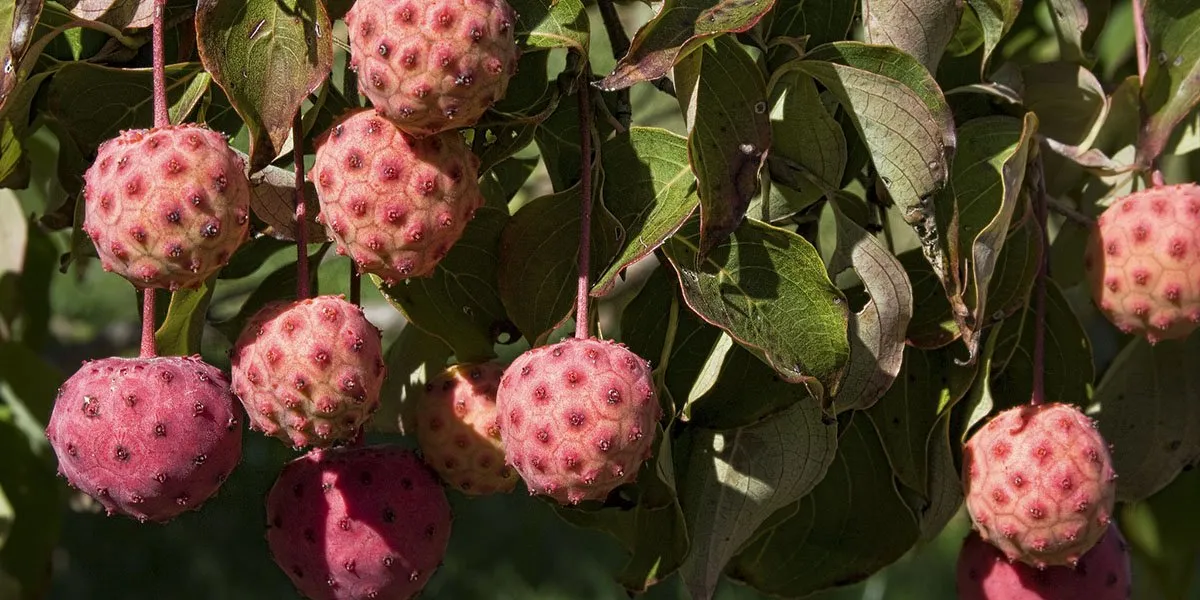
Asian Dogwood (Cornus kousa), also known as Japanese Dogwood, is a pink fruit from a tree of the same name. While it may not look like it, these are actually berries!
Kousa dogwood berries are edible. The taste is sweet, described as a mix between mango, stone fruit, and persimmon. The stringy and bitter skin should be removed before consumption.
Apart from consumption, these berries are praised for their alleged health benefits. They are packed with antioxidants and vitamins. Asian Dogwood also contains a considerable amount of calcium.
15. Prickly Pear

The Prickly Pear (Opuntia), also known as Cactus Pear or nopal, is a beautiful pink fruit. It can be found in the American deserts, and perhaps also in American desserts. Because practically all cactus fruits are edible — none are considered toxic.
Interesting about the prickly pear is its unique sweet flavor. The fruits taste like a natural version of bubblegum, mixed with the flavor of watermelon.
The prickly pear is an edible fruit used for consumption, but it would supposedly also have a number of health benefits. It is claimed that cactus fruit has anti-inflammatory properties. Again, these claims are unconfirmed.
16. Grapefruit
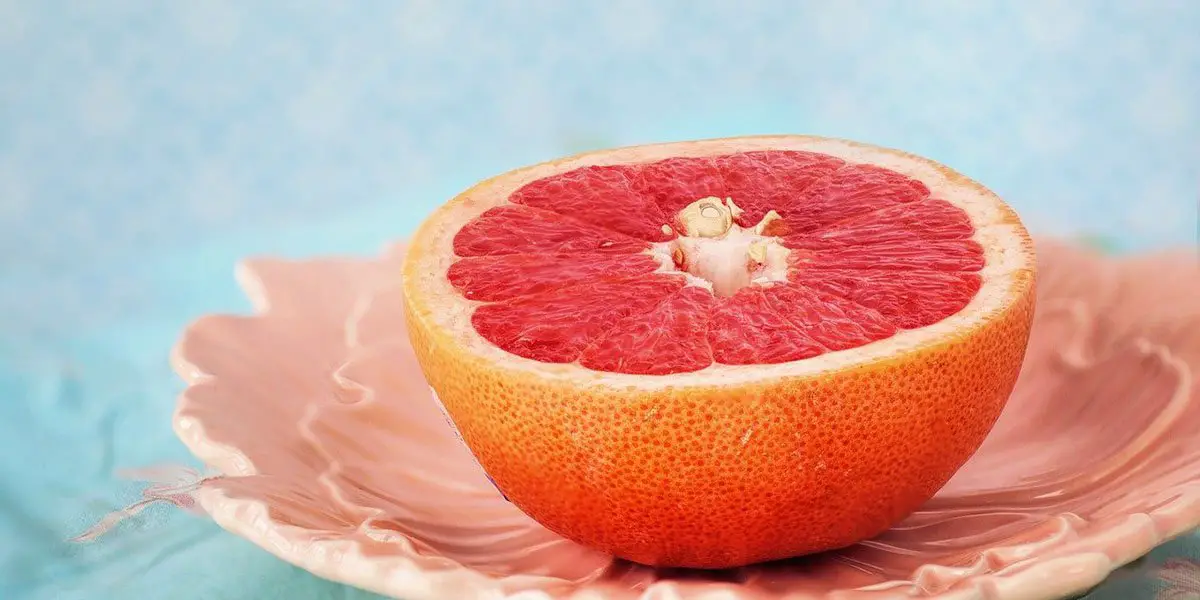
The pink Grapefruit (Citrus × paradisi) is a hybrid between a pomelo and an orange. The flesh on the inside of some of these citrus fruits is distinctly pink, which is why you can find them on this list.
Grapefruits taste tart and bitter, and are as acidic as oranges. It is a mix of lemon and orange, but with a floral undertone. The edible citrus fruit is the perfect refresher.
The main use of this fruit is consumption, usually in the form of a juice or smoothie. It is also used to treat a range of health problems, including asthma and high cholesterol. It’s supposedly also helpful in combatting weight gain and skin problems like eczema. All health claims are, as per usual, anecdotal in nature.
17. Beauty Berry
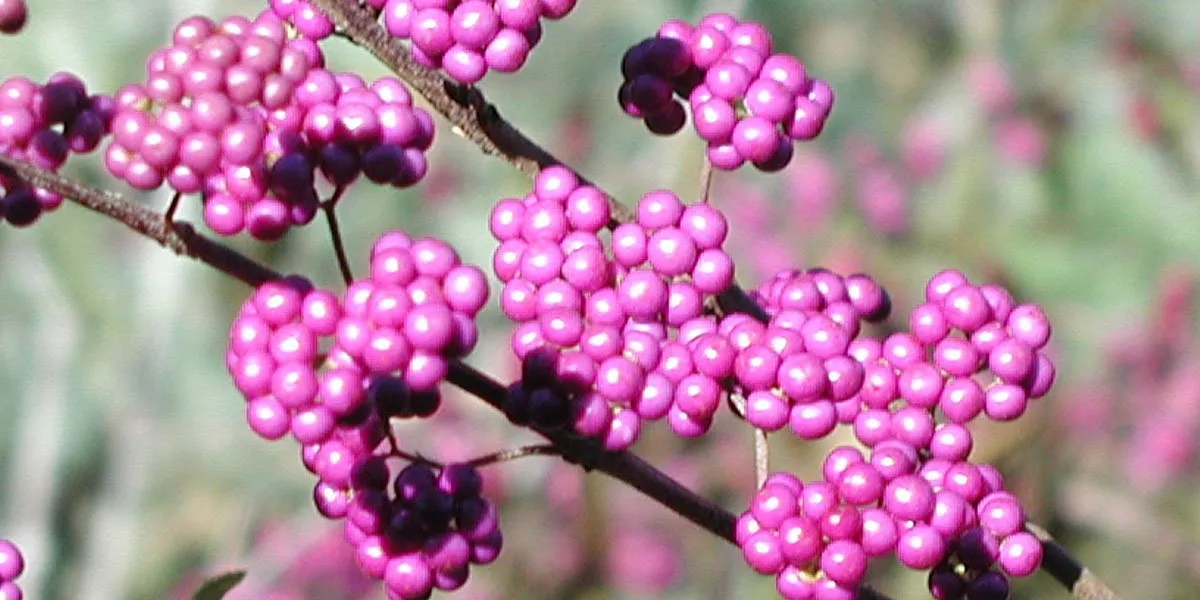
The Beauty Berry (Callicarpa Americana) is one of those fruit names that pique your interest immediately. Add to that the interesting pink color of the berry, and we have a real gem here.
Beauty berries are edible, but not very tasty unless processed into jelly or ice cream sauce. Their taste is commonly compared to grapes or elderberries.
Beautyberries are American and have been used by the native people for centuries. The berries were used for tea, decorations, and much more. Even the leaves of the plant have been used, mainly for medicinal purposes.
18. Mountain Ash Berry

The Chinese Mountain Ash Berry (Sorbus hupehensis) is generally a red berry, only pink when it is still unripe on the tree. However, there is also a pink variety called ‘Pink Pagoda’. The fruit of the so-called Rowan tree is, in fact, edible.
The berries can be processed in a wide range of products, from wine to ketchup, and from jams to soups. Even pie and vinegar are made with this fruit.
Do be aware of the fact that these berries are slightly toxic to humans and pets, so only eat them in moderation. Side-effects include vomiting, diarrhea, and excessive salivation.
19. Pink Pearl Apple
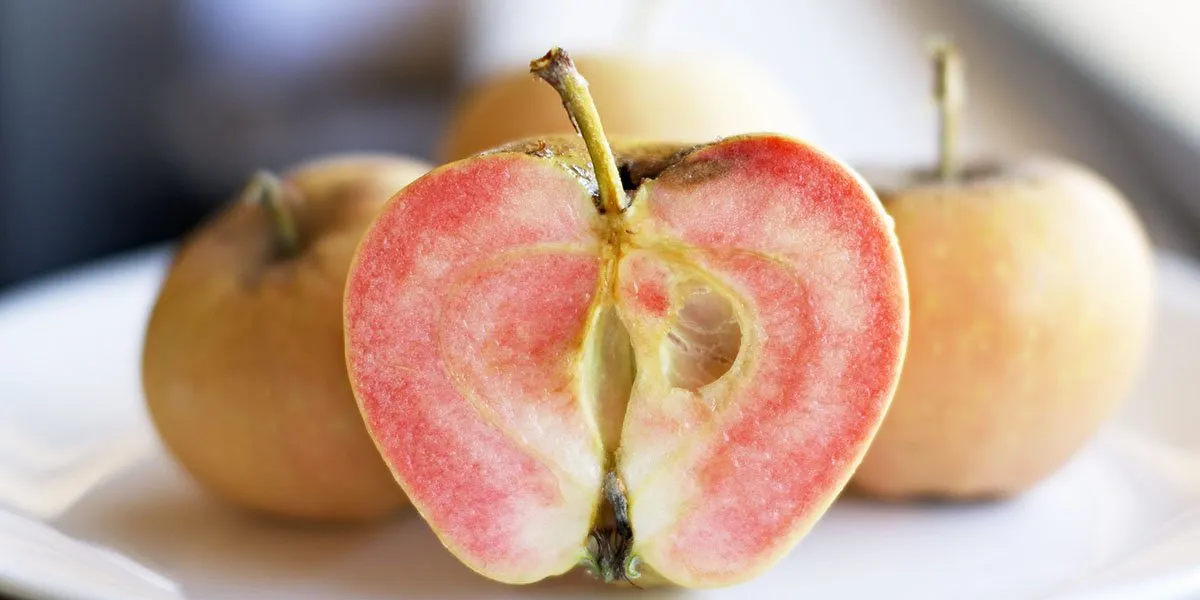
The Pink Pearl Apple (Malus domestica) is one of the very few apple varieties with pink flesh inside. This variety used to be known under the name ‘Pink Lady’, but this name was not trademarked and later used for a non-pink apple variety with the same name.
Native to the state of California, the Pink Pearl apple is specifically selected based on its pink flesh color and surprisingly rich sweet-tart flavor. The skin of this fruit is usually not pink, but a mix of red and yellow.
The medium-sized apples are specifically well-suited for baking products like apple pies, open-topped tarts, or for use in apple sauces. Much like other apple varieties, they are rich in vitamin A, C, and B (in that order).
20. Pink Pineapple
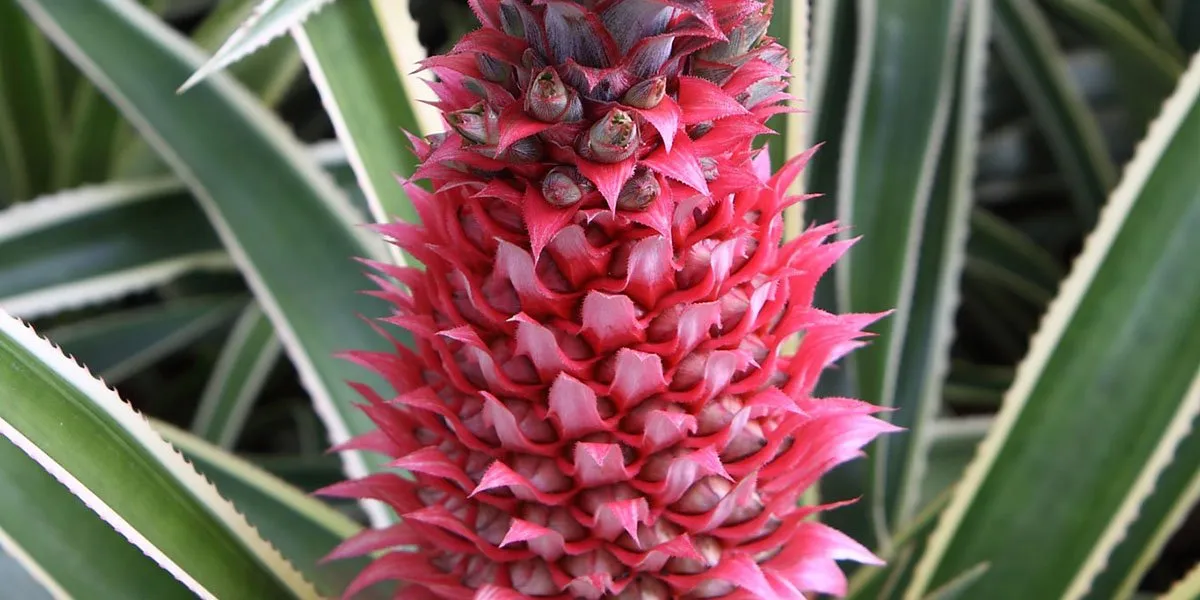
Pineapples are definitely not pink, except for one variety. The Pink Pineapple (Ananas comosus) is known as the ‘rosé’. It’s actually the edible part of the fruit that is pinkish in color. The outside will generally look ‘normal’.
The taste of the pink pineapple is noticeably sweeter and less sour than regular yellow pineapple. It even has notes of pineapple candy flavor in there, but in an all-natural form.
The pink variety of this fruit is rich in a pigment called lycopene, which also gives watermelon and tomatoes their distinctive color. The pigment also contributes to the sweeter and less sour flavor of the pink pineapple. The main use of this fruit is consumption in fruit mixes, smoothies, or juices.
21. Ōhelo ʻAi

One of the more unique pink fruits on this list is the Ōhelo ʻAi (Vaccinium reticulatum), which is native Hawaiian for Ohelo berry. The name also gives away where this special fruit has its roots. It is uniquely capable of surviving ash falls and high altitudes.
The berries of the Ōhelo ʻai or Ohelo berry are edible and most commonly processed into jams, sauces, or pies. It is most closely related to the cranberry, but will taste less tart and less flavorful.
This fruit is rich in vitamins in minerals, which makes them a good addition to a balanced diet. A wide range of health problems would likely benefit from regularly eating Ōhelo ʻai berries, but none of this is backed up by conclusive scientific evidence.
22. Rhubarb
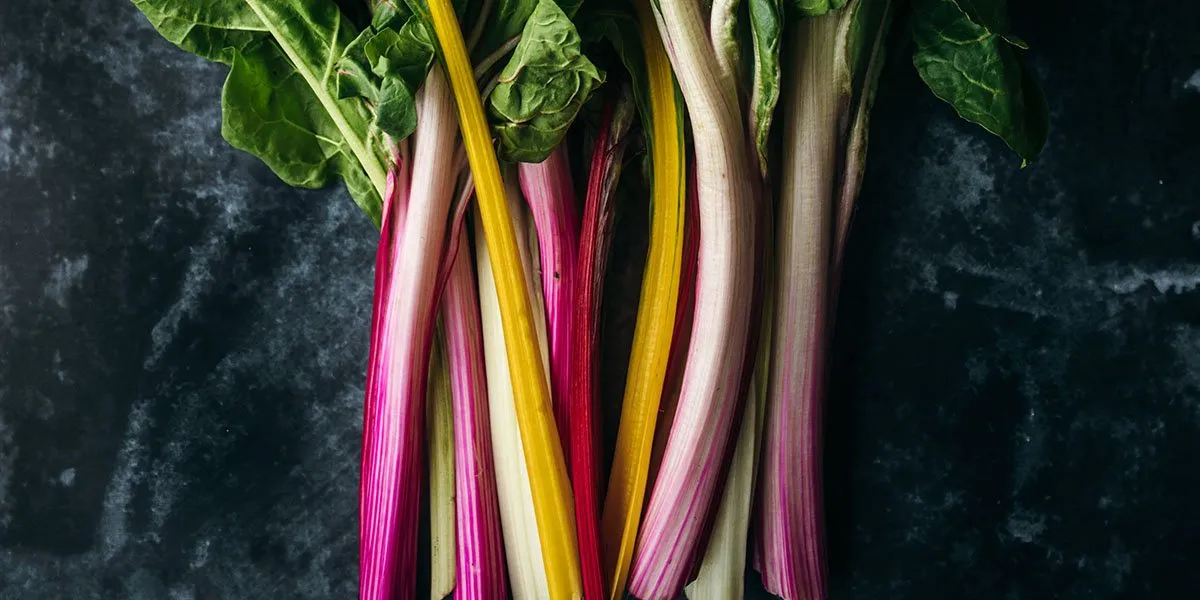
You might think we’re crazy for putting vegetables on this list. But it’s not what you’d think. While it is technically considered a vegetable, Rhubarb (Rheum rhabarbarum) is legally considered a fruit by the United States Department of Agriculture (USDA). We were just as shocked when we learned that!
The flavor of a rhubarb lies somewhere between tart, tangy, and sour. It is also slightly sweet, but mixed with the sourness of a lemon.
Rhubarbs are consumed in a variety of ways. It can be roasted, sauteed, stewed, or pureed. It’s used as part of pastries, cakes, but can also be made into beverages, including alcoholic ones like gin. It is attributed to a range of health benefits, but is primarily famous for its use in treating digestive issues.
23. Rambutan
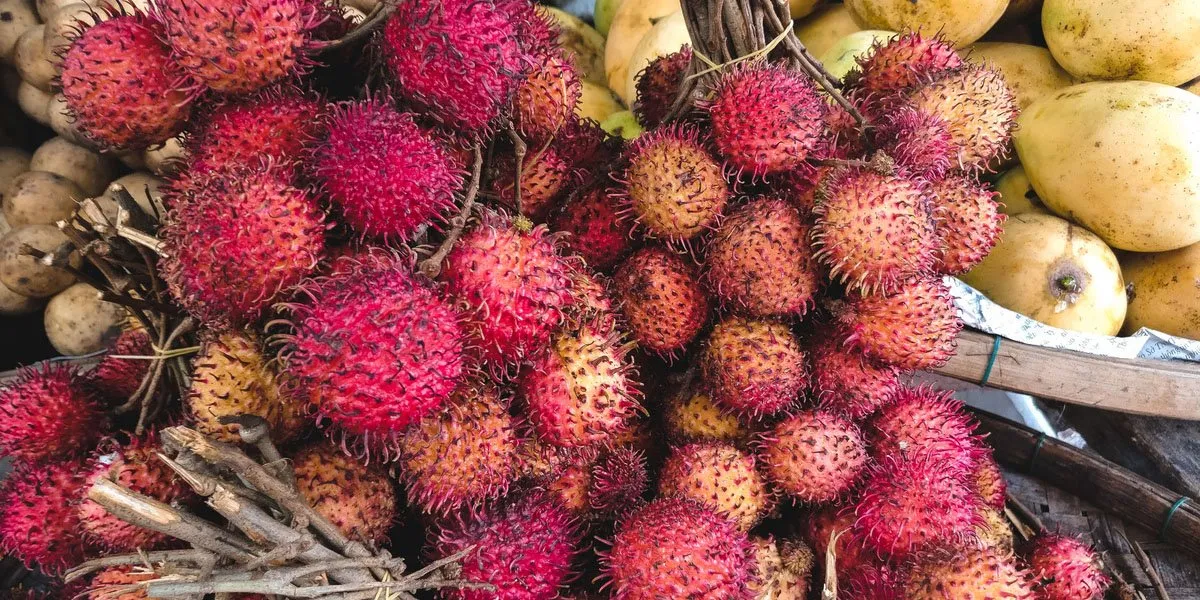
The Rambutan (Nephelium lappaceum) is a small fruit in the lychee family, but a bit more prickly and hairy on the outside. Its texture and flavor are a mix between grapes and dates, and the smell of a ripe rambutan is more akin to pineapple.
The pink fruit is native to Southeast Asia, and can usually be found everywhere in Malaysia. The outside of the fruit might be reddish-pink, the fruit itself is white like lychee. But it clearly has its own distinct flavor, a mix of sweet and sour flavors.
The main use of the Rambutan is consumption, partially for its refreshing taste, partially because of its many supposed health benefits. It is used as a cure for anything: from improving your eyes to boosting the immune system. From fixing dry lips, to lowering blood pressure. None of this is backed by scientific evidence, but it definitely won’t harm you to eat some yourself.
24. Cara Cara Orange
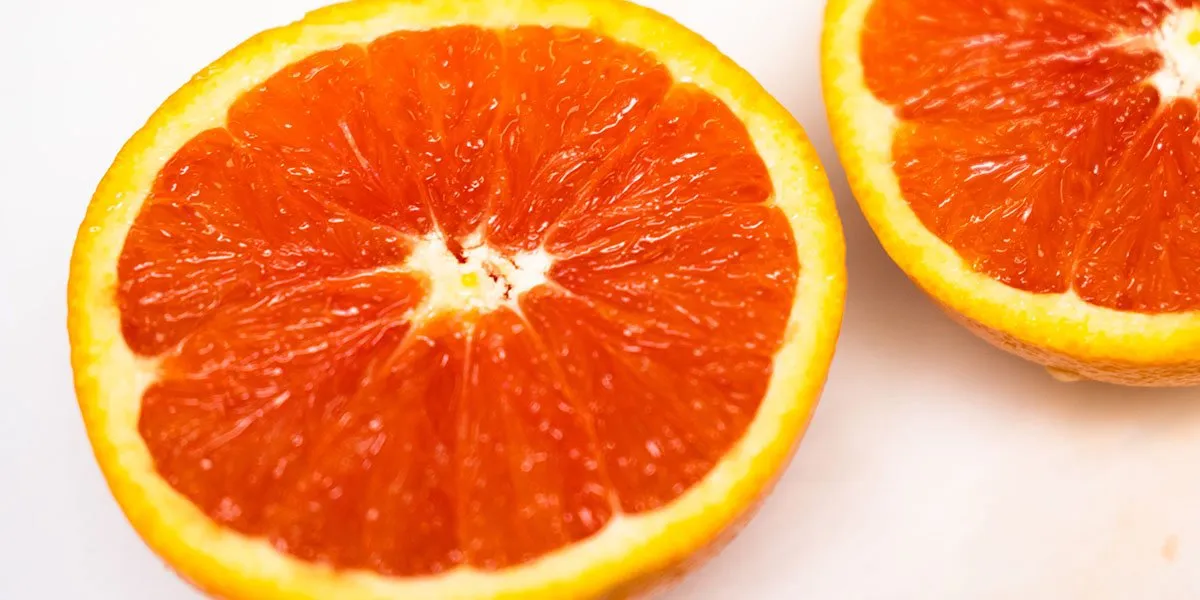
The Cara Cara Orange (Citrus sinensis ‘Cara Cara’) is orange on the outside and pink on the inside. It is actually one of the few oranges with a red-pinkish color inside. It is a so-called navel orange, which refers to a specific subspecies of sweet citrus fruits.
The Cara Cara orange is often compared to blood orange and grapefruit, but it is very different from both. While the flavor of a blood orange is more akin to a grapefruit, the Cara Cara orange tastes like a sweet navel orange with hints of strawberry.
The main use of the pink-fleshed citrus fruit is consumption, as a fruit or as a juice. Since it’s rich in vitamins and minerals (specifically high in vitamin C and fibers), it is attributed to a range of health benefits as well. As per usual, these claims are not backed by conclusive scientific evidence.
25. Loganberry
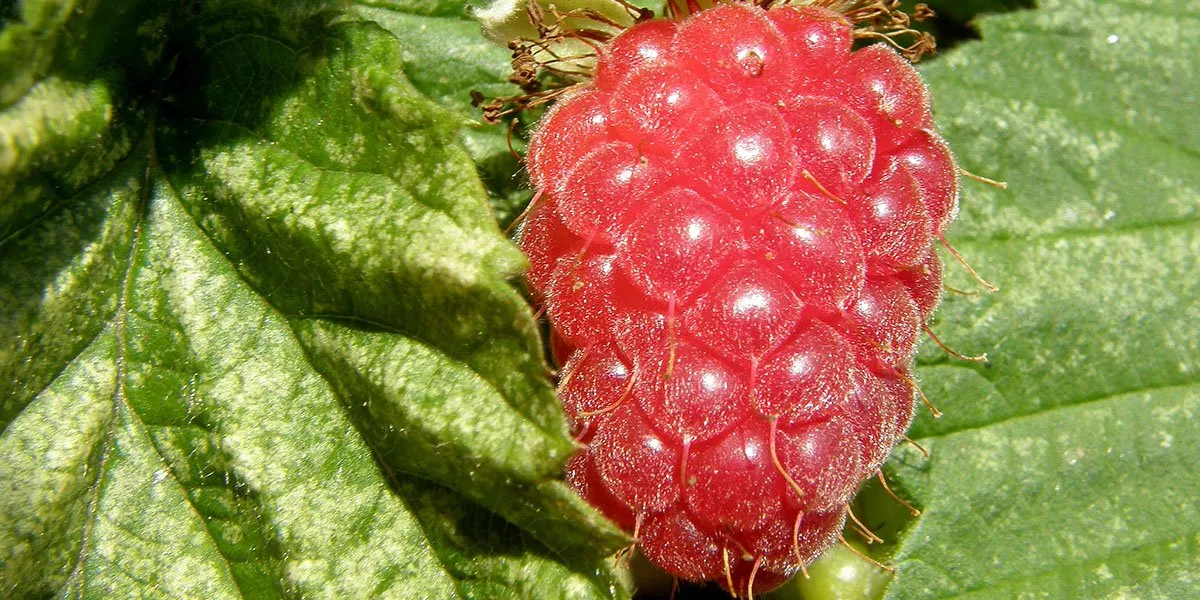
The Loganberry (Rubus × loganobaccus) is a hybrid pink fruit, an accidental mix between a European red raspberry and a North American blackberry. It is characteristically longer than a raspberry (up to 4cm in diameter), and a lot juicier as a result of this.
The flavor of the loganberry is similar to a raspberry, but has a noticeably more acidic and savory taste. Since its juice is less concentrated because of its size, raspberries will have a stronger taste than loganberries.
The fruit is packed with healthy vitamins and minerals, and has traditionally been used to prevent scurvy. They can be eaten directly, or be made into a jam, vinegar, alcohol, or even candy. They are also perfect for use in pies and pastries.
26. Yangmei

Last but definitely not least we have the Yangmei (Morella rubra), which is a tropical pink fruit that is also referred to as the yumberry, rouge fruit, or bayberry. It is the national berry of China, and is also widely cultivated in this region of the world.
The unique Yangmei flavor can best be described as a herbal version of a strawberry, mixed with raspberry. It tastes sweet and is rich in flavor, but is also noticeably tart. The redder the color, the sweeter the Yangmei.
Because of its herbal properties, the fruit has been traditionally used in Chinese teas and alcoholic beverages. The fruit is also commonly eaten fresh, and the Yangmei is often praised for its richness in vitamins and minerals (and the wide range of health benefits attributed to them).

